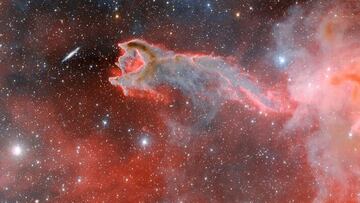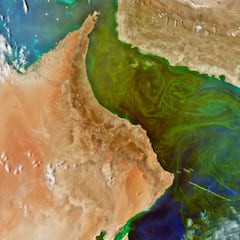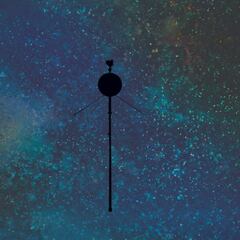Images of the “God’s Hand” traversing the cosmos captured by astronomers
Experts captured this “cloudy, ominous structure” thanks to the four-meter Víctor M. Blanco telescope of the US National Science Foundation on Cerro Tololo.

Recently, astronomers captured images of one of the strangest and most fascinating cosmic phenomena that occurrs in outer space. What looks like the figure of a hand projected in the constellation of Puppis, 1,300 light years away from Earth, has been called by astronomers as “God’s Hand”. Specifically, it is a nebula called CG 4, a cometary globule located in the Milky Way, which stands out from the rest for its peculiar hand shape.
This phenomenon was located in space by the four-meter telescope, Víctor M. Blanco, of the US National Science Foundation in Cerro Tololo, Chile. The center’s astronomers were able to capture several images of GC 4 at different scales, and with them they have managed to analyze its shape and size. According to experts, the globule has a dusty head with a diameter of 1.5 light years, and its long, wispy tail is about eight light years long.
Although it is a rare cosmic element to spot, this is not the first time photographs have been taken of them with a telescope. Already in 1976, the UK Schmidt Telescope in Australia was able to capture several cometary globules. Although at that time it was an unknown phenomenon, it is currently known that their tails are capable of blocking the passage of most of the light.
Cometary globules
As described by experts, cometary globules are a subclass of dark nebulae known as Bok globules, isolated clouds with dense gas and cosmic dust surrounded by hot ionized material.
Related stories
When these clouds exhibit shedding of material resulting in an extended tail, they are known as cometary globules due to their vague resemblance to a comet, although they have nothing in common. The structure is thought to be shaped by stellar winds of nearby hot, massive stars.
In addition, its origin is believed to be due to the expansion of a supernova that took place approximately one million years ago, and it is currently known to contain at least 31 cometary globules, in addition to CG 4.


Complete your personal details to comment